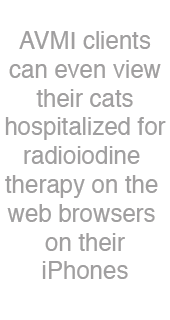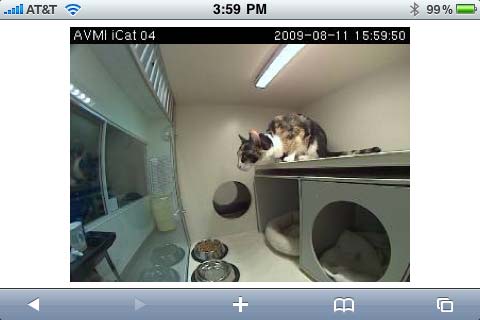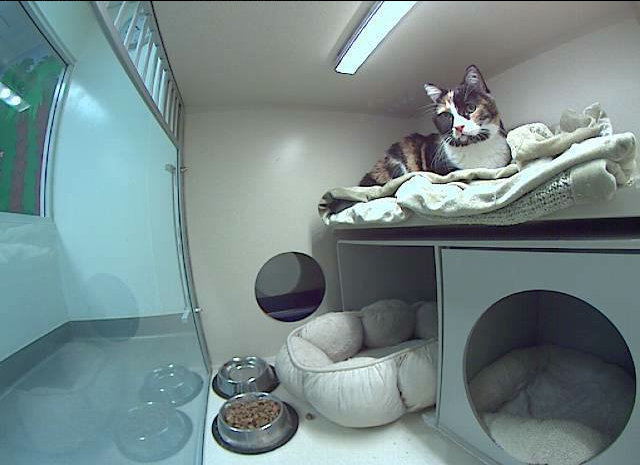
Shorter Stays
Back in 1985, when Dr. Michael Broome began treating hyperthyroid cats using radioiodine, things were very different than they are today. In those days the only facilities that treated hyperthyroid cats were veterinary teaching hospitals affiliated with large universities. The university teaching hospitals that initially offered radioiodine therapy for hyperthyroid cats were primarily focused on teaching students, and less concerned with the particulars of the radioiodine therapy experience.
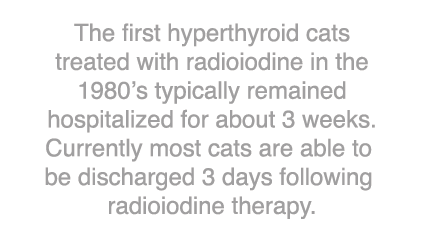
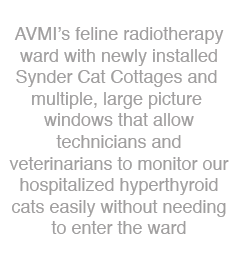
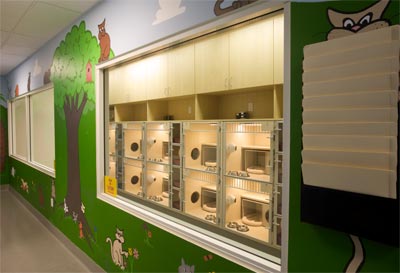
In 1986 Broome returned to his native southern California to establish the world's first private practice exclusively for the treatment of feline hyperthyroidism. Located in Orange County California, Advanced Veterinary Medical Imaging (originally named Veterinary Nuclear Imaging) began offering radioiodine therapy for cats with hyperthyroidism utilizing a schedule that ensured the cats would remain in the hospital for only 1 week. To streamline the process of radioiodine therapy AVMI performs the thyroid scan (more accurately called a thyroid scintigraphy) needed to confirm the patient's diagnosis and assist in radioiodine dose determination, on the same day the cat is admitted for therapy.
Based on its initial success, AVMI opened a second office in Los Angeles, California shortly thereafter. In the years following the successful launch of AVMI in southern California, the Radiologic Health Branch of the California Department of Health eased regulatory requirements such that most cats are now eligible for discharge only 3 days following radioiodine therapy. These changes represent a major reduction in total hospitalization time for radioiodine therapy when compared to the original cats treated in the early 1980's.
Better Accommodations
Despite the dramatic reduction in the length of hospitalization, many clients continued to express concerns over the nature of their catʼs accommodations during the hospitalization for radioiodine therapy. In 1999, after close to 15 years treating hyperthyroid cats with radioiodine, AVMI opened the doors of a new facility dedicated to providing the optimal therapy and environment for cats needing radioiodine therapy for both benign and malignant thyroid disease.
During that 15 years a handful of other veterinary facilities had opened in southern California that also provided radioiodine therapy for cats with hyperthyroidism. The logistics of the isolation needed for the procedure resulted in most of these facilities dedicating a single, small isolated room for the hospitalization of cats needing radioiodine therapy.
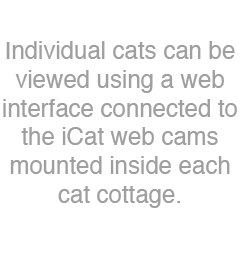
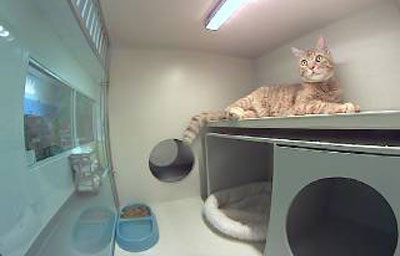
Technological Improvements
Most hyperthyroid cats are clinically stable when referred for radioiodine therapy. And the radioiodine therapy itself is amazingly non-stressful. As a result, most hyperthyroid cats undergoing radioiodine therapy do not require continuous 24x7 monitoring. The variety of conditions that sometimes occur concurrently in hyperthyroid cats, especially thyroid induced cardiovascular disease, do result in individual cases that warrant a more aggressive monitoring schedule than is usually available for cats undergoing radioiodine therapy. However, the very nature of the isolation required of patients receiving radioiodine therapy makes direct persistent supervision of the patient impossible. Veterinarians and technicians in constant contact with radioactive patients day after day, week after week, year after year, would themselves receive potentially excessive levels of radiation exposure, limiting their ability to perform these duties over time.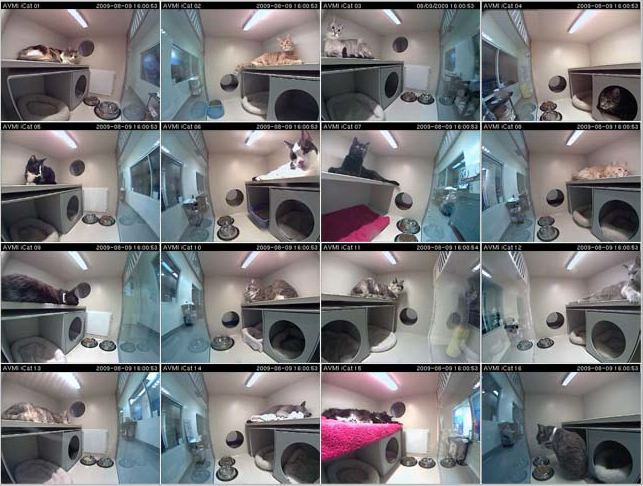

From the very beginning AVMI designed its new feline radiotherapy ward with the goal of ensuring optimal supervision of every patient hospitalized for radioiodine therapy. The feline radiotherapy ward is set up with multiple large picture windows to allow veterinarians and technicians the opportunity to observe these patients throughout their hospitalization. Despite the improvement in patient monitoring enabled by these design changes however, the veterinarians and technicians providing care for radioactive patients are restricted by the same principles that require your dental technician to exit the room when taking your dental radiographs. The dental technician who takes your dental radiographs does not leave the room because the individual exposure from 1 dental x-ray is harmful, but because the cumulative exposure this person would obtain over a career taking dental radiographs could be. Similarly, continuous direct supervision of cats receiving radioiodine therapy could prove problematic to those providing care for them.
